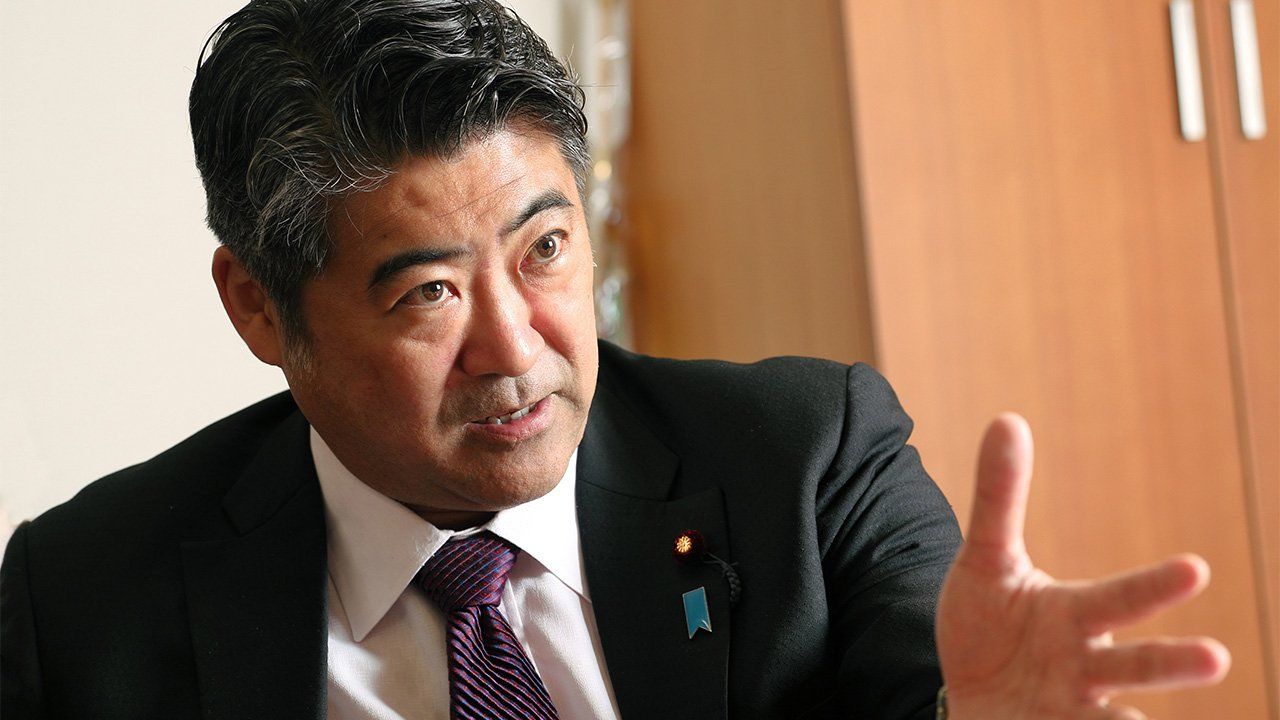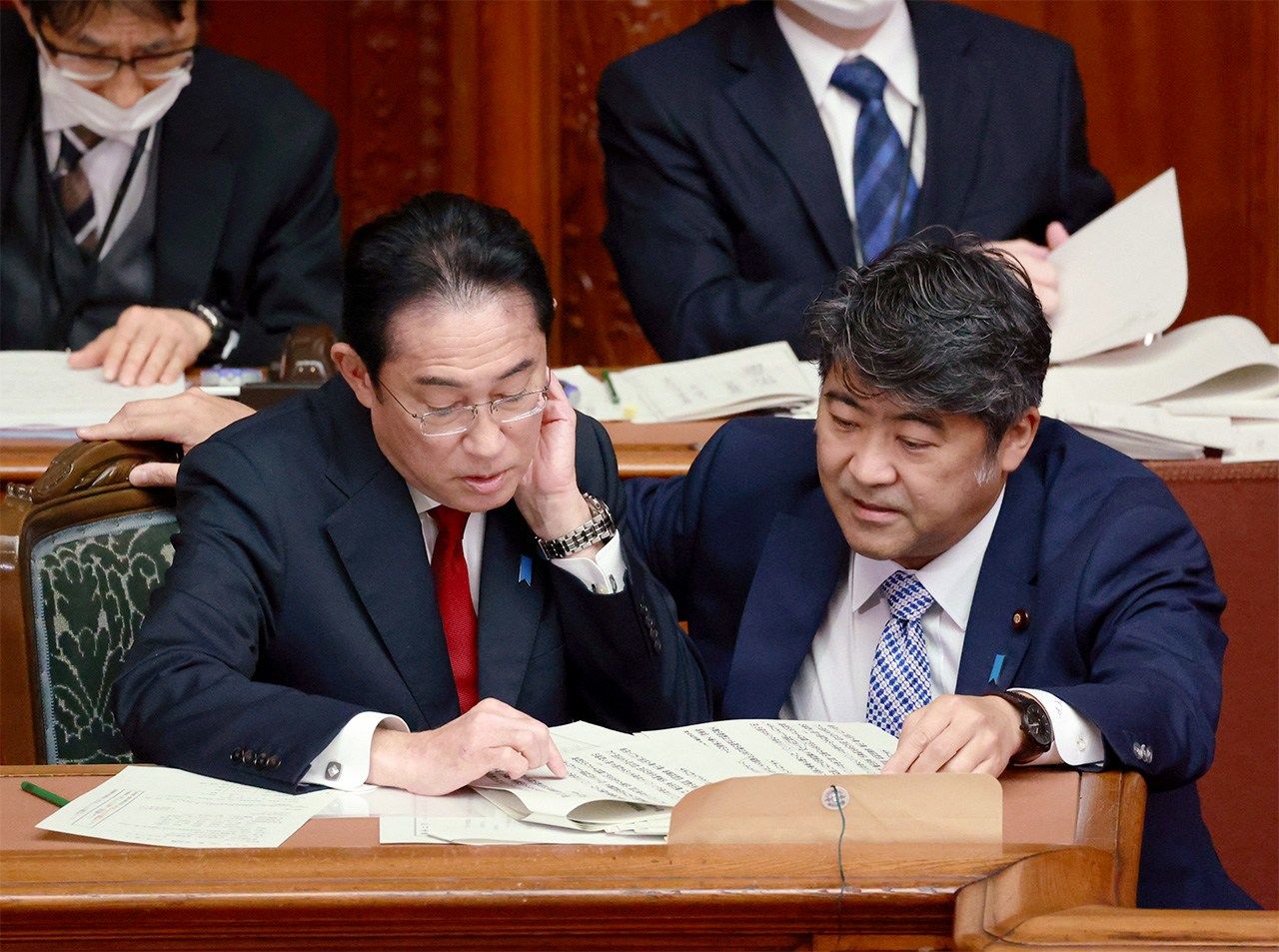
Japan Rethinking Its Security Policy
Deputy Chief Cabinet Secretary Kihara Seiji on the “Major Shift” of Increased Defense Spending
Politics- English
- 日本語
- 简体字
- 繁體字
- Français
- Español
- العربية
- Русский
Japan’s “Severe” Regional Security Environment
TAKENAKA HARUKATA The National Security Strategy, the National Defense Strategy, and the Defense Build-up Plan were reformulated and released as a set in December last year. Originally, the NSS was supposed to be revised about every ten years or so. What was the situation in October 2021, just after the inauguration of the administration of Prime Minister Kishida Fumio? Was he already intent on revising the documents? What preparations were underway at that time?
KIHARA SEIJI I believe Prime Minister Kishida wanted to revise the National Security Strategy from the start. Internal preparations led by the National Security Secretariat had also begun. As the strategy sits at the center of Japan’s security policy, it logically made sense to revise all three key national security documents.
TAKENAKA As deputy chief cabinet secretary, what was your involvement in revising the NSS?
KIHARA In December 2021, members of the Liberal Democratic Party began organizing their own meetings in anticipation of revision. The National Security Council also became active. For example, the NSC’s National Security Secretariat began holding its own hearings, including nearly twenty meticulous meetings with outside experts. The NSC’s core four-minister grouping of the prime minister, the chief cabinet secretary, and the ministers of foreign affairs and defense also met on eighteen occasions to discuss revisions. I participated in and gave my viewpoint at these NSC meetings.
TAKENAKA Did Russia’s February 2022 invasion of Ukraine affect any discussions, like those on counterattack capability or defense spending?
KIHARA There was no significant impact in terms of content. Since the NSS focuses on Japan’s national interests, it concentrated on Asia and the Indo-Pacific region. Even if Russia did not invade Ukraine, Japan’s regional security environment would still have been extremely severe. I believe Russia’s invasion did, however, provide an opportunity for the Japanese public to reflect on regional and global security and how it directly affects their livelihoods.
Increased Readiness for Realistic Possibilities
TAKENAKA From your point of view as deputy chief cabinet secretary, what are the notable outcomes from revising the National Security Strategy and the National Defense Strategy?
KIHARA There are several important outcomes. The administration of Prime Minister Abe Shinzō had previously enabled Japan’s limited right to collective self-defense through passage of the 2015 peace and security legislation. We took a further step forward to operationalize the legislation based on realistic possibilities. In other words, although the legislative framework was already in place, we needed to examine whether the Self-Defense Forces as currently constituted could really respond to real world scenarios. Specifically, we identified a shortage of ammunition, the low availability of equipment, the lack of replacement parts, and dilapidated military infrastructure. All of these issues could compromise the SDF’s ability to respond to a regional emergency.
Through this process we identified necessary improvements. With the changes, we believe we have put into place “both wheels of a cart”—we have both the overall framework and the posture that enables it. This was probably the most meaningful outcome.
Another important outcome was the decision to strengthen currently insufficient capabilities that could enhance Japan’s national defense. To this end, we decided to augment our standoff defense capabilities, to enhance counterattack capabilities using these stand-off capabilities, and to make increasing use of unmanned assets.
A third outcome was the increased focus on improving various linkages. For example, there are linkages between the Coast Guard and the SDF, between the science and technology sector and the defense equipment sector, and between public infrastructure such as airports and ports and defense infrastructure. The government had previously identified the above challenges but had made little progress on addressing them. Now we have established a framework that allows us to improve the synergies here.
Finally, we have formulated a framework and secured the necessary budget to commit to new defense domains such as cyber and the electromagnetic spectrum. I believe that these four outcomes are the most important.

Prime Minister Kishida Fumio (left) and Deputy Chief Cabinet Secretary Kihara Seiji talk in the Diet during a plenary session after the announcement of the three key security documents at the House of Representatives, April 4, 2023. (© Jiji)
An Unchanged Commitment to “Defensive Defense”
TAKENAKA What stood out for me while reading the National Defense Strategy was the wording that Japan would increasingly take on “primary responsibility to disrupt and defeat invasions of Japan.” This may seem quite natural, but traditionally when it comes to the defense of the nation there has been a division of responsibility between Japan and the United States—Japan would act as the “shield,” and the United States, the “spear.” Does this new language reflect a change in military strategy?
KIHARA There has been no fundamental change in the division of roles between Japan and the United States. Having a standoff defense capability is not necessarily equivalent to having offensive capabilities—they also function as defensive capabilities. With stand-off capabilities, we actually enhance our ability to act as a “shield” and protect what needs to be protected for national defense.
TAKENAKA The NDS also discusses acquisition of counterstrike capabilities. It describes these as capabilities that “enable Japan to mount effective counterstrikes against the opponent’s territory.” Tokyo is currently looking to acquire Tomahawk cruise missiles from the United States and to extend the range of existing surface-to-ship missiles to build out the SDF’s counterstrike capability. Are these efforts, therefore, simply an extension of the range and functions of Japan’s “shield”?
KIHARA Japan remains committed to exclusively defensive defense. These new capabilities are not for proactively attacking other countries and will only serve as a deterrent from attack. Deterrence capabilities, however, must change in response to the capabilities of opponents.
To use a baseball analogy, pitchers in the old days used to use mostly only curveballs and straight fastballs. Modern pitchers are now, however, armed with sliders, forkballs, and a variety of other pitches. Similarly, today, there are countries arming themselves with ballistic missiles with irregular trajectories and hypersonic missiles. Therefore, the same “shield ability” of previous years is no longer enough to effectively defend against new weaponry. Counterstrike capabilities therefore function as a deterrent while also enhancing our standoff capabilities.
TAKENAKA Of course, I understand that we don’t set out to attack others, but if Japan is attacked . . .
KIHARA Of course we will continue to improve our ballistic missile defense capabilities. However, it is also a fact that we cannot protect ourselves from incoming missiles solely through BMD. We may need to consider using counterstrikes to realistically protect ourselves from this kind of threat. There is, however, no change in the basic division of roles between Japan and the United States.
TAKENAKA Nevertheless, there is a qualitative difference between the “interception only” approach, as has been the case up until now, and being able to conduct attacks on foreign territory.
KIHARA Up until now, the government’s position as given in the Diet has been that counterstrike capabilities were constitutionally “permissible” but that Japan would not acquire them as a policy choice. However, we are now saying that if we do not acquire these capabilities, we may not be able to defend Japan. The main goal is to dissuade opponents from attacking us and succeeding, so this is a capability that may help us do that together with BMD.
Increased Defense Spending a “Major Shift”
TAKENAKA In terms of major historical shifts in defense policy, possession of counterattack capabilities is probably up there with the constitutional reinterpretation of 2014 and the peace and security legislation of 2015, which enabled Japan to partially use the right of collective self-defense.
KIHARA As Japan has always reserved the right to acquire counterstrike capabilities, I don’t think we can really say this is such a major change. However, I think going beyond the 1 percent of GDP limit on defense spending is a major shift.
TAKENAKA I’d like to focus a little more on standoff defense capabilities. In addition to using long-range missiles for counterstrike, the NDS notes that Japan is concurrently considering the possibility of striking opponents’ military forces far in advance of their approaching, entering, or landing on Japanese territory.
KIHARA Actually, rather than a concurrent consideration, this is the main motivation for acquiring standoff capabilities. Whether an attack comes from the air or from the sea, we should seek to thwart opponents from as far away as possible. The limited manpower and precious lives of the SDF are at stake, and we cannot unnecessarily put them at risk.
TAKENAKA Another policy announcement was to raise defense spending to 2 percent of GDP, using the NATO spending standard as a point of reference.
KIHARA Most countries within the international community contribute to peace and stability to some degree through their defense spending. Nevertheless, we did not come to this figure solely by referring to what others are doing. We made a judgement based on the collection of capabilities we identified as necessary for Japan’s defense and the need to enhance Japan’s capacity to cooperate with allied and like-minded countries. So, for the next five years, starting in fiscal 2023, we will spend a total of 43 trillion yen, with fiscal 2027’s overall annual defense spending coming to 8.9 trillion yen. Needless to say, the higher the spending, the more defense capability we can acquire. However, the 2 percent mark is a good guideline, while also being in line with global standards.
TAKENAKA In the National Security Strategy, China is described as Japan’s “greatest strategic challenge ever” based on its external behavior and military trends. How did the government arrive at this description?
KIHARA It’s a straightforward description of current reality. It simply reflects China’s attempts to unilaterally change the status quo in the East and South China Seas and its extensive, rapid, and opaque buildup of military power.
(To be continued in part 2.)
(Originally written in Japanese by Ishii Masato of the Nippon.com Editorial Department based on a May 10, 2023, interview. Banner photo: Deputy Chief Cabinet Secretary Kihara Seiji in Nagatachō, Tokyo, on May 10, 2023. © Hanai Tomoko.)